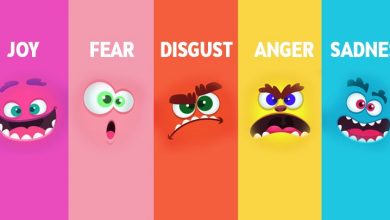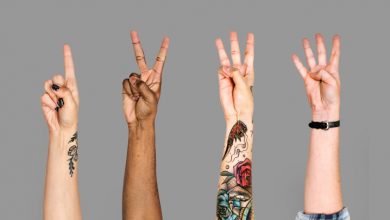
Why did I choose this tool?
I participated in a session in It’s Up to Me 5, run by Antonio Jovanovski, called Five Identities, which had us rank five of our identities in terms of the most important to the least important to us in the moment. I saw how much this exercise helped me and other people understand our identities better. I liked how simple it was and how it quickly showed me which identities didn’t matter too much to me at the moment and which identities did. It gave me the confidence to express the identities to which I felt very connected.
How does this apply to being a trainer?
As a trainer, we interact with many people—participants, fellow trainers, organizers, etc.—and each person will have different priorities when it comes to their identities. Some people may identify first as a student, a son, a Muslim, a trainer, or something else, and if we know how they identify, it can help us choose appropriate methods. For example, if we are in a room of what we identify as women, but they mostly identify with their career as business leaders, a workshop that uses examples of being a woman may not be as powerful as one that uses examples of being a business leader. Also, if we have a group of learners from different nations, and yet we know they all identify as refugees, we can hone a method that highlights the similarities of being a refugee rather than the differences of their national identities.
Content
We all see ourselves and others differently. A simple way to define identity is how we see ourselves and others—the roles we play, the groups to which we belong, the traits/attributes that we have, etc. We all have countless identities—age, gender, nationality, language, Android/iPhone/dumbphone user, sports team, family position, etc.—and often we don’t pause to reflect on which identities are important for us in the moment and which ones are not important. As we go through our lives, we place different levels of importance on these identities and less on others, and this can impact how we behave and see the world.
What does it mean to prioritize different identities?
Let’s use an example and say a participant, Jan, has the following identities: male, German, brother, Christian, artist, entrepreneur, adopted child, cancer-survivor, and single, amongst many others. At the moment he arrives to a training, certain identities may be more important to him in his life than others. For instance, although he was adopted, it may have been a long time ago and he doesn’t even think about it anymore; the training is about starting businesses, and so he arrives thinking about how he’s an entrepreneur and an artist; in the previous year, he defeated cancer and that is core to the business that he wants to start; and although he would say that he’s Christian, he hasn’t practiced in 10 years due to an incident that happened between him and the church, so he feels very distant from that identity.
In the above example, the participant seems to be aware of and values his identities of cancer-survivor, entrepreneur, and artist, while being less connected to his identities of adopted child and Christian.
When might we re-prioritize our identities?
It can happen slowly over time or quickly depending on the situation. Using the example above, let’s say that over the years, as Jan traveled more outside of Germany, his identity of being German mattered less and less to him. However, perhaps he goes to a training and people start making jokes about Hitler, and all of a sudden, he realizes that he’s the only German in the room and feels a strong awareness of his German identity. It also may happen that when he first arrives to a training, he feels strongly attached to his male identity because he is one of few males there, and as the training progresses, he starts to forget about that, as he feels more connected with the others.
How could different identity priorities impact a training?
- Participants may clump based on shared identities. The ones who identify similarly may try to be on the same team with each other, only interact with each other at the dinner table, or overall ignore the other people. For example, people who identify as Spanish speakers may find the other Spanish speakers and speak only in that language, isolating the non-Spanish speakers.
- Participants may believe that they don’t belong because they don’t think other people share the same identity that they do. Maybe all of the participants are female, and yet one participant may not feel that connected to that identity and feel more connected to her identity as a videogamer and think that nobody there will understand her.
- Participants may assume that everyone shares the same identity and make jokes that they think are likely to not offend, but then end up really offending someone, as in the example above with Jan.
- Trainers may assume that the participants who selected vegetarian on the registration packet are very strict about being vegetarian and go to great lengths to make sure that all cookware is cleansed thoroughly of meat product, only to realize that the participants were vegetarian but not that strict about it.
- Participants may arrive to a group of people from many different nationalities and assume that everyone is very different—only to later realize that everyone loves improv theatre and cares more about that than their nationalities.
The Five Identities activity
This is a short activity that you can do by yourself or with a group to help you practice ranking or prioritizing the identities in your life.
You need 5 small sheets of paper. On each paper you will write your identity as it relates to the following questions:
- What is a role that you play in your family that is important to you?
- What is a religious or other belief that is important to you?
- What is a professional role of yours that is important to you?
- What is a hobby that is important to you?
- What is a name of yours that is important to you?
After writing down your answers to these questions, you will choose one identity that currently is the least important to you right now. If you are in a group, you will share with the group why you chose this identity as #5; if by yourself, you can speak aloud or journal about why you chose it. Then everyone else does the same. Then you will choose the identity that is the #4 most important one for you. And then you repeat this all the way until you get to the #1 most important identity.
Self-identifying
This exercise of Five Identities is about how we self-identify—the categories and labels we put to ourselves and which ones mean the most to us. In a training, we often identify the participants and the other trainers, but we often are unaware of how they prioritize their identities. I believe we also rarely pay attention to how we self-identify. I believe that when we are more clearly aware of our own shifting identity priorities, then we are more able to communicate and interact with the shifting self-identities of the participants.
How does this activity help us address the issue of identity when working with participants?
By doing this activity, we gain a stronger sense of our own ranking of identities and emphasize the concept of identity in general. If we do this activity at different times in our lives, we can also see how our own concept of identity changes over time, prioritizing certain identities and disregarding other ones. Lastly, if we do this activity with other people, then we can see how people self-identify in different ways. This enhanced awareness of identity can help us incorporate identity issues into the planning and execution of workshops.
Closing
How we identify changes over time and can impact how we connect or don’t connect with others. Being more aware of how we prioritize our identities can help us know which things we are likely to be OK with compromising and which ones are nonnegotiable for us, and how those attitudes can change over time. This enhanced awareness of how we prioritize our identities can help us see how participants and other trainers may change in how they prioritize their identities as well, as well as give us the language to talk about different identities.
Reflection Questions
- What is one identity to which you used to feel strongly connected but no longer do?
- What is one identity about which you used to not care much but to which you now feel strongly connected?
- What is one time where you thought participants had very different identities but actually seemed to prioritize the same identity?
- What is one time where you thought participants had very similar identities but actually seemed to prioritize different identities?
- What’s one thing that you can do now that you know more about your identity?
- In the Five Identities activity:
- What is one choice that surprised you?
- What is one choice that you knew you were going to make?
- What is one thing that you learned about yourself?
- What is one identity that you wish you didn’t have?
- What is one identity that you’re grateful for having?
- How many people do you think would expect that you put such an identity for #1?
Exercises
- Write a paragraph about who you are, and see which identities appear and in which order.
- Ask someone else to write a paragraph about who they are, and see which identities appear and in which order.
- Do the Five Identities activity with your family or friends.
- Do the Five Identities activity with your fellow trainers or coworkers.
- Write a journal entry about why the #1 identity matters so much to you right now.
- Do the Five Identities activity but instead of telling people how you ranked your five identities, rank them privately, and then ask the other people to guess how you ranked them.





